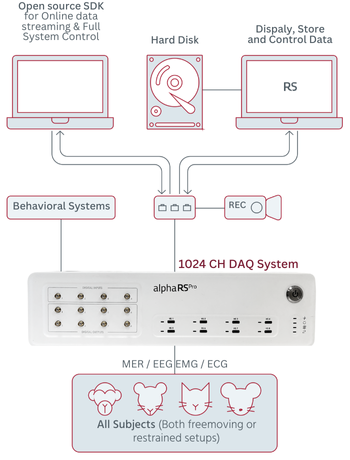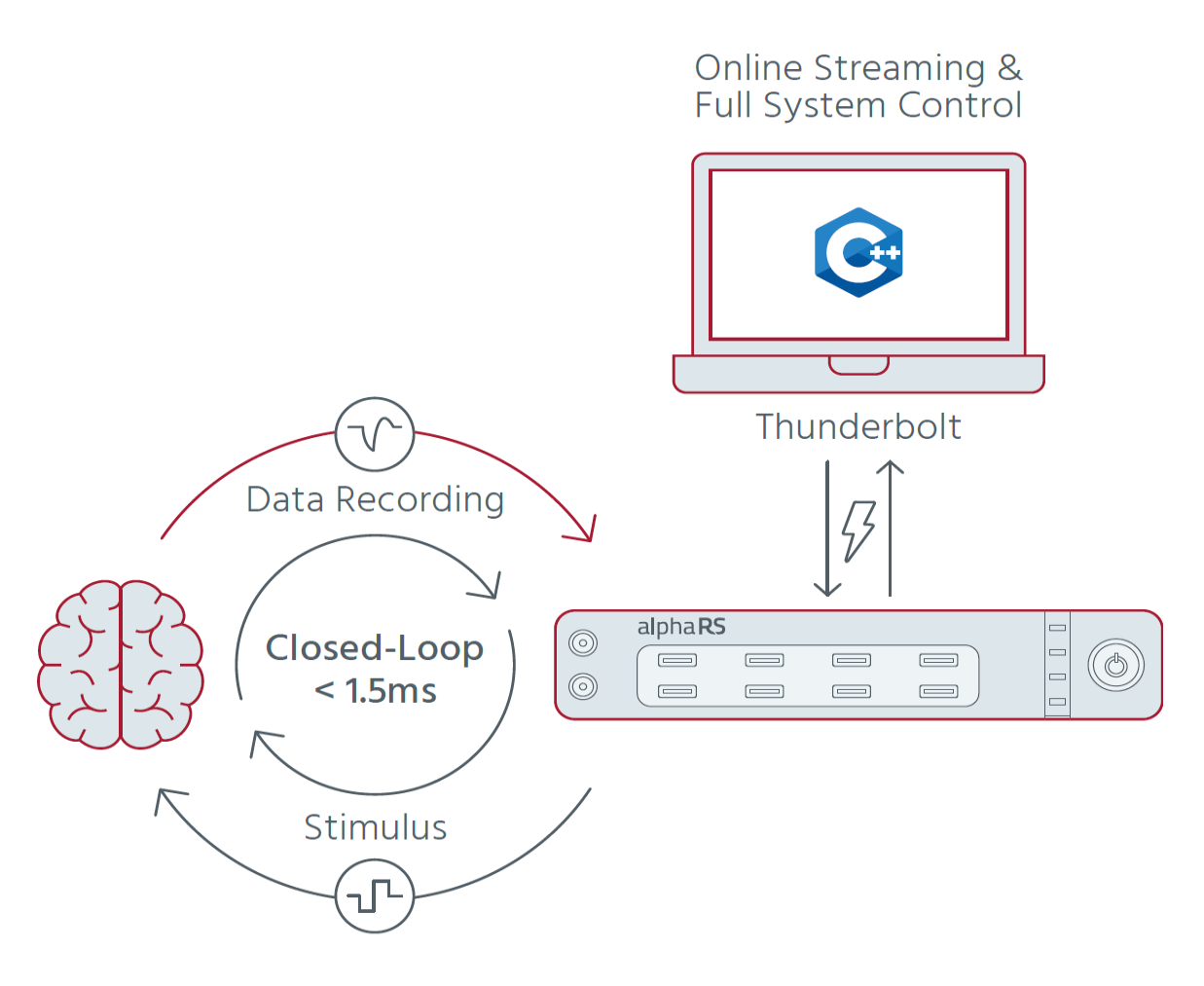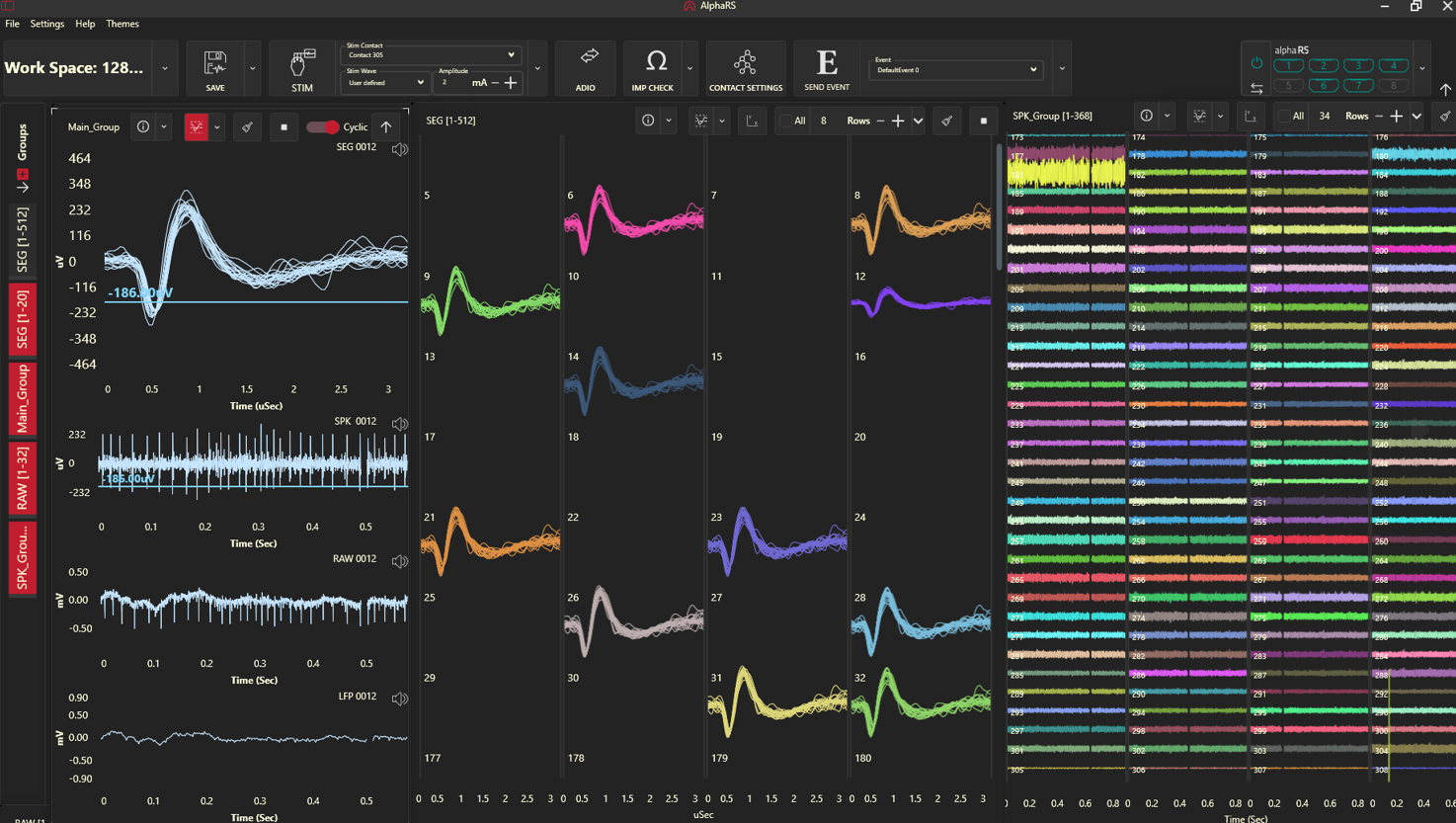Up to 1024 channels. Compact & portable data acquisition system with expandable channels

Online data streaming and full system control. User-friendly API for two-way communication using MATLAB, Phyton, C#, or C++ for streaming all data and control system functionality.

Integrated Electrical Stimulation: With integrated electrical stimulation, up to 256 contacts can record and/or stimulate. Mode of the contact (recording or stimulation) can be controlled by the system’s API or user interface.
- Use only one software and one hardware to control your neuromodulation experiments!
Impedance check: Built-in impedance check for all contacts, allowing the user by one click to check the electrode’s impedance during any stage of the experiment.
Closed Loop/BMI/BCI support. Low latency C++ API specially designed for advanced uses (BMI/BCI/Closed-loop experiments). Our C++ API runs under Windows OS and it can reach 1.5mS closed loop.

Digitized Headstages. Ultra-small and lightweight headstage suitable for all types of setups and subjects.
Analog/Digital inputs and outputs: Embedded digital and analog input that allows connection to external sensors; SDK enables access and control of sensors and actuators
Online Statistics: Spike raster, and evoked potential.
Online & Flexible Filtering: Real-time streaming of 4 signal types for each contact –> RAW, Spikes, LFP's & Segmented spikes.
User friendly GUI. Modern and User-friendly graphic user interface, with a customizable workspace and the ability to control 3rd party systems. Displayed different groups of channels with different filters. GUI uses GPU to display up to 2K channels.
